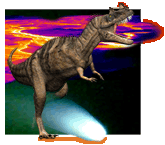Age and Origin of the Chicxulub Impact and Sandstone Complex, Brazos River, Texas: Evidence from Lithostratigraphy and Sedimentilogy
Type
Multidisciplinary investigations based on the lithology, sedimentology, mineralogy and biostratigraphy of upper Maastrichtian to lower Danian boundary (KTB) sequences along 3.5 km of the Brazos River in Falls County, Texas, reveal depositonal sequences, including an impact spherule-rich sandstone complex, characteristic of sequence stratigraphic models applied to shallow shelf areas, such as incised valleys, lag conglomerate, storm deposits and repeated bioturbation. The top of the Corsicana Formation coincides with a channel, which we interpret as incised valley. The erosion surface marks a major depositional sequence boundary (SB) associated with the latest Maastrichtian sea-level fall. Initial channel deposits consist of coarse shelly glauconitic sand with large lithified clasts containing impact spherules and large bored and encrusted phosphatized concretions, which we interpret to indicate that the Chicxulub impact occurred well prior to the lithification, erosion and redeposition at the base of the channel. The primary Chicxulub ejecta layer lies about 40-65 cm below the sandstone complex in a 3 cm-thick yellow clay layer that consists of cheto smectitie (altered impact glass) interbedded in claystones of the Corsicana Formation. Above the sandstone complex, claystones and mudstones are burrowed and correspond to a condensed interval interpreted as a maximum flooding surface (MFS).Based on biostratigraphy and the δ13C shift, the KT boundary is up to 1 m (50-100 ky) above the sandstone complex and coincides with increased sediment accumulation during the early Danian sea level rise (HST). No impact signals are observed in KT deposits. These features are inconsistent with a single catastrophic bolide impact on Yucatan and associated mega-tsunami deposition as commonly interpreted.
The biostratigraphy and KT characteristic δ13C shift of the Brazos sections indicate that the KTB, sandstone complex and the Chicxulub impact occurrred as three different stratigraphic events during the late Maastrichtian planktic foraminiferal zone CF1. These are represented by : 1) the Chicxulub impact sequence deposited about 200-300 ky prior to the KTB ; 2) the sandstone complex with reworked impact spherules deposited in incised valleys during the latest sea level fall about 100-150 ky prior to the KTB, and 3) the KTB event during the subsequent HST and following the condensed MFS. PDF

